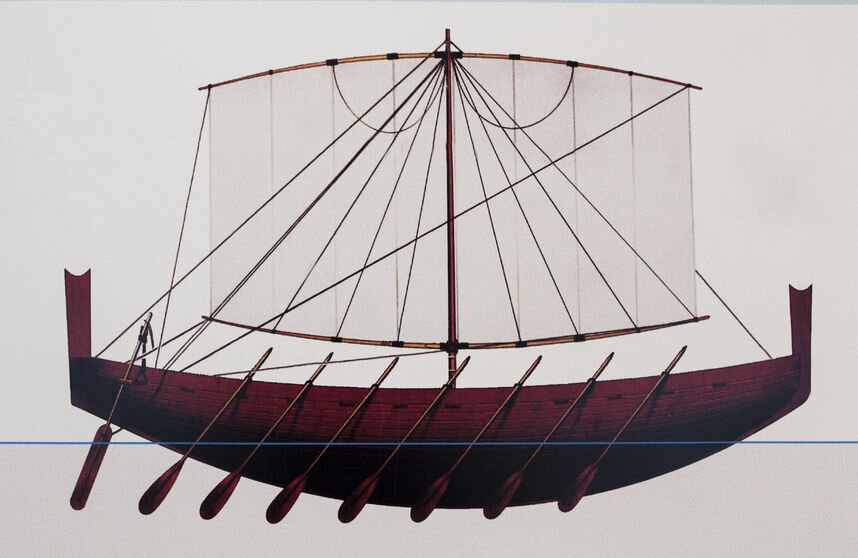phoenician period.

Phoenician Trading Ship
The Phoenicians in Libya
The Phoenicians were the earliest of the outsiders who came to Libya and established trading ties with the indigenous inhabitants in the region. The Phoenicians were Mediterranean people from the Levant. They were primarily merchants by trade and due to their incredibly impressive navigation capabilities they first settled along the Mediterranean coast of Carthage, then in order to expand their trading business they took the route of North Africa and finally settled in Tripolitania1.
Due to their trade expansion, the Phoenicians built three commercial outposts situated in Oea (now Tripoli), Libdeh (now Leptis Magna) and Sabratha (Zwagha)2. While some historians credit the formation of these three cities to the Phoenicians, others maintain that urban developments in these areas existed prior to the arrival of the Phoenicians. What is not contested, is that the Phoenicians recognized the strategic significance of these locations, and the three cities themselves all expanded and developed significantly after the Phoenicians intensified their trading in the region3.
Phoenician Trading Ship: Phoenicians originated in modern day Lebanon
As the Phoenicians had arrived in Libya for the purpose of trading, they deemed it important to establish long lasting and bilateral ties with Berber tribes of the region, as they realized that forming good ties with the locals was critical to expanding their market and enabling their trade to flourish. Likewise, Berbers too were welcoming, because they recognized the benefit of the Phoenician’s trade in their respective cities4.
Libyco-Punic Mausoleum with bilingual Numidian and Punic-Libyan Inscription, Dougga (Now Tunisia)
FOOTNOTES.
Oyeniyi, Bukola Adeyemi. The History of Libya. Santa Barbara, CA: Greenwood, an imprint of ABC-CLIO, LLC, 2019.
ibid.
ibid.
ibid.


